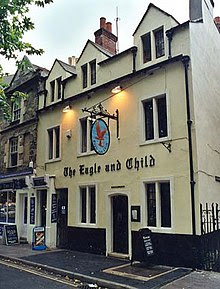DEBORAH CROMBIE: My editor told me that during the pandemic authors seemed to have either written like crazy, or been totally blocked. I'm happy to say that our guest today, G.M. Malliet, was one of the former. (Not talking about where I fall on that spectrum...!) I have long been a fan of her Max Tudor (dishy former spy, now vicar--what's not to love?) books and her D.C.I. St. Just books, and now there is a new series to love as well. Now, if only some of that productivity would rub off on me...
“From you have I been absent in the spring”
by G. M. Malliet
And the summer, winter, and autumn.
That’s a quote from the incomparable Shakespeare, of course. Sonnet 98. There’s a school of thought he wrote this sonnet during one or another of the plagues that beset London, forcing him to flee, and causing his separation from his beloved, whoever that was. The Dark Lady or the Fair Youth—we may never know.
Agatha Christie adapted the title for one of her most successful non-mystery novels, writing as Mary Westmacott.
From March 2020, officially the start of our modern pandemic, I have largely been absent from the writing scene. My husband and I, at our ages not willing to play about with this, took the official advice and hunkered down, emerging towards the end only for delayed funerals of family members and for one mystery writers’ conference.
Meanwhile, to pass the time, I wrote. Constantly and as a distraction from reality, as I’ve always done, although this was a bit more intense, more enforced, and resulted in the completion of the better part of five books.
For those who don’t know me, and I’m assuming by now that is most of you, I write as G.M. Malliet and because of all this industry, and thanks to a dynamic new agent, I'm currently juggling three series. DCI St. Just of the Cambridgeshire Constabulary was the protagonist of my first series, started about 15 years ago with DEATH OF A COZY WRITER, and he was revived last year by Severn House with DEATH IN CORNWALL, St. Just #4.
Max Tudor is my vicar sleuth – former MI5 and devilishly handsome. I did seven of those books for Minotaur starting with WICKED AUTUMN and will do an eighth for Little, Brown next year (THE WASHING AWAY OF WRONGS).
AUGUSTA HAWKE is my new series starring a first-person female protagonist, a mystery writer who notices her neighbors have gone missing. About the same time, she is becoming bored with her writing (which should sound familiar to many authors) and decides to up her procrastination game by investigating. By the second book (AN INVITATION TO A KILLER), coming soon from Severn House, she is still writing mysteries but now she has a PI license.
I also write short stories, and I’m proud to say my story appearing in the July/August 2021 edition of Ellery Queen Mystery Magazine was just nominated for a Macavity Award. Winners in all categories will be announced in September at opening ceremonies @Bouchercon2022.
If it all seems like a lot, it is, but my husband and I recently celebrated just plain surviving with a trip to Ireland, Wales, and Scotland. I’ll spare you the millions of travel photos except for this one, which is of a place I love.
It is Stirling Castle where Mary Queen of Scots was crowned Queen of Scotland at the age of nine months. It was pretty much all downhill for our stubborn and willful Mary after that, who was beheaded at the age of forty-four after spending nearly twenty years of her life imprisoned. Somehow, despite her colossal lack of judgment, Mary remains a favorite. Perhaps because I can relate.
Godspeed and good luck and, as the Irish say, may the road rise up to greet you all. It’s great to be back.
Sometimes it's safer not to know your neighbors' secrets.
Where are Niko and Zora Norman? Crime writer Augusta Hawke puts her sleuthing skills to the test to solve the mystery of her disappearing neighbors in the first entry in a new series.
While Augusta Hawke is a successful author of eighteen crime novels, since her husband's death she's been living vicariously through her Jules Maigret-like detective Claude and his assistant Caroline. Then a handsome police detective appears investigating a real-life mystery.
Where are her neighbors, the Normans? No one has a clue what's happened - except Augusta. Although she isn't nosy, spending all day staring out the windows for inspiration means she does notice things. Like the Normans arguing. And that they've been missing a week.
Once the Normans' car is found abandoned, Augusta senses material for a bestseller and calls on the investigatory skills she's developed as a crime writer. But she soon uncovers long-hidden secrets and finds herself facing real-life dangers her characters never faced . . . ones she can't write her way out of.
G.M. Malliet is the award-winning author of four St. Just mysteries, seven Max Tudor mysteries, the suspense novel WEYCOMBE, and numerous short stories collected in crime anthologies or published in Ellery Queen Mystery Magazine (EQMM) and The Strand. New short stories will appear soon in EQMM ("The Pact" and "Something Blue"). A new mystery series (AUGUSTA HAWKE) debuts in July 2022 and a fifth St. Just novel will appear in August 2023.
DEBS: Congratulations on the Macavity nomination, Gin!! And we are all certainly glad you're more than back!
REDS and readers, did isolation make you more productive?
G.M. will stop by to chat, so maybe she will tell us her secret!





































